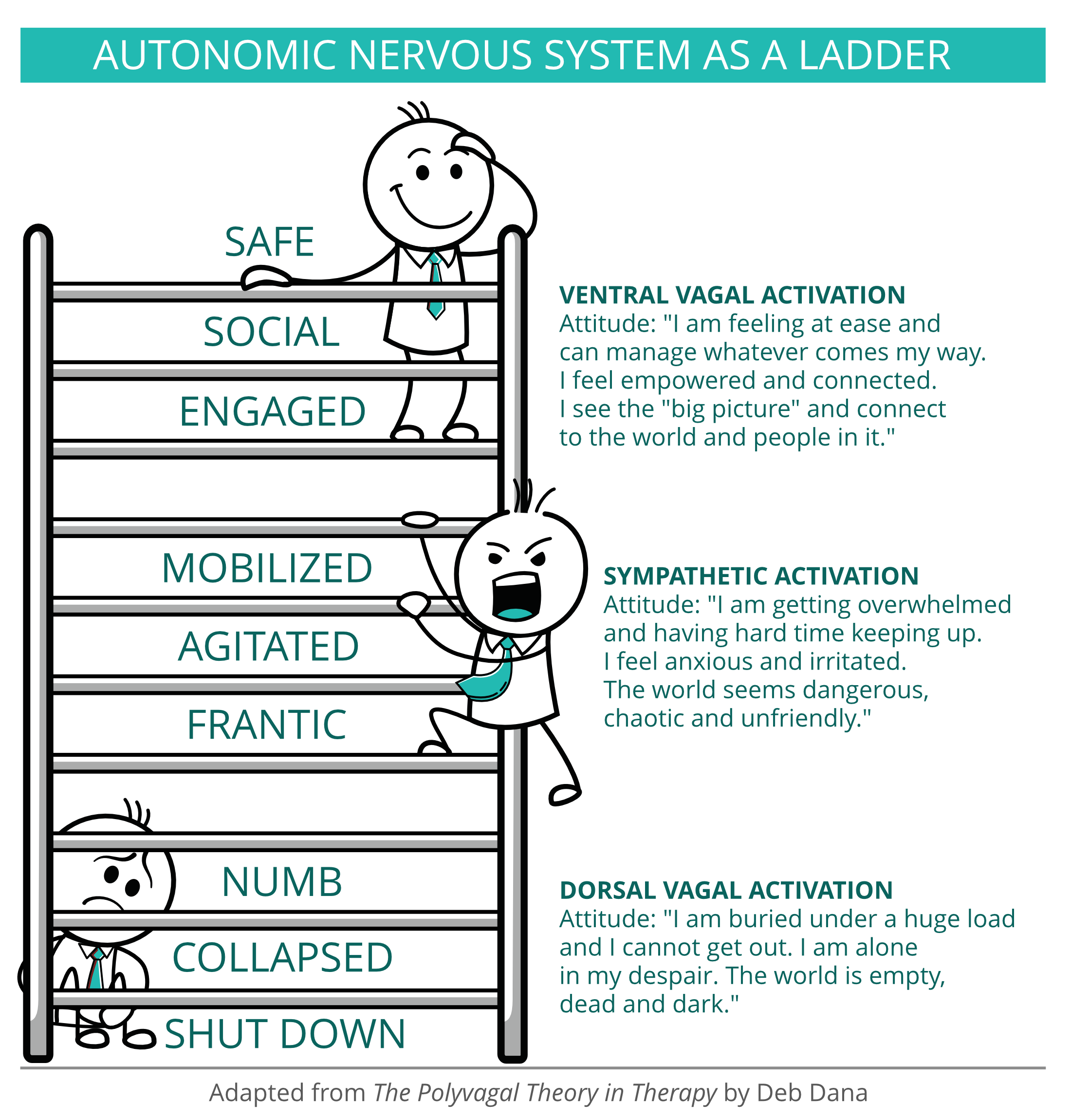
ANSladder Yinspire Isle of Wight Yin Yoga and Yoga Therapy
The ventral side of the vagus nerve responds to cues of safety in our environment and interactions. It supports feelings of physical safety and safe emotional connection to others in our social environment. The dorsal side of the vagus nerve responds to cues of danger. It pulls us away from connection, out of awareness, and into a state of self.

The polyvagal "ladder" and how it can help you Counselling In Hamilton
Do you want to learn how to use the polyvagal ladder to regulate your nervous system and heal from trauma? In this blog post, you will find graphics that explain the polyvagal theory and how to apply it to your daily life. You will also discover how music and movement can help you move up the ladder and increase your well-being.
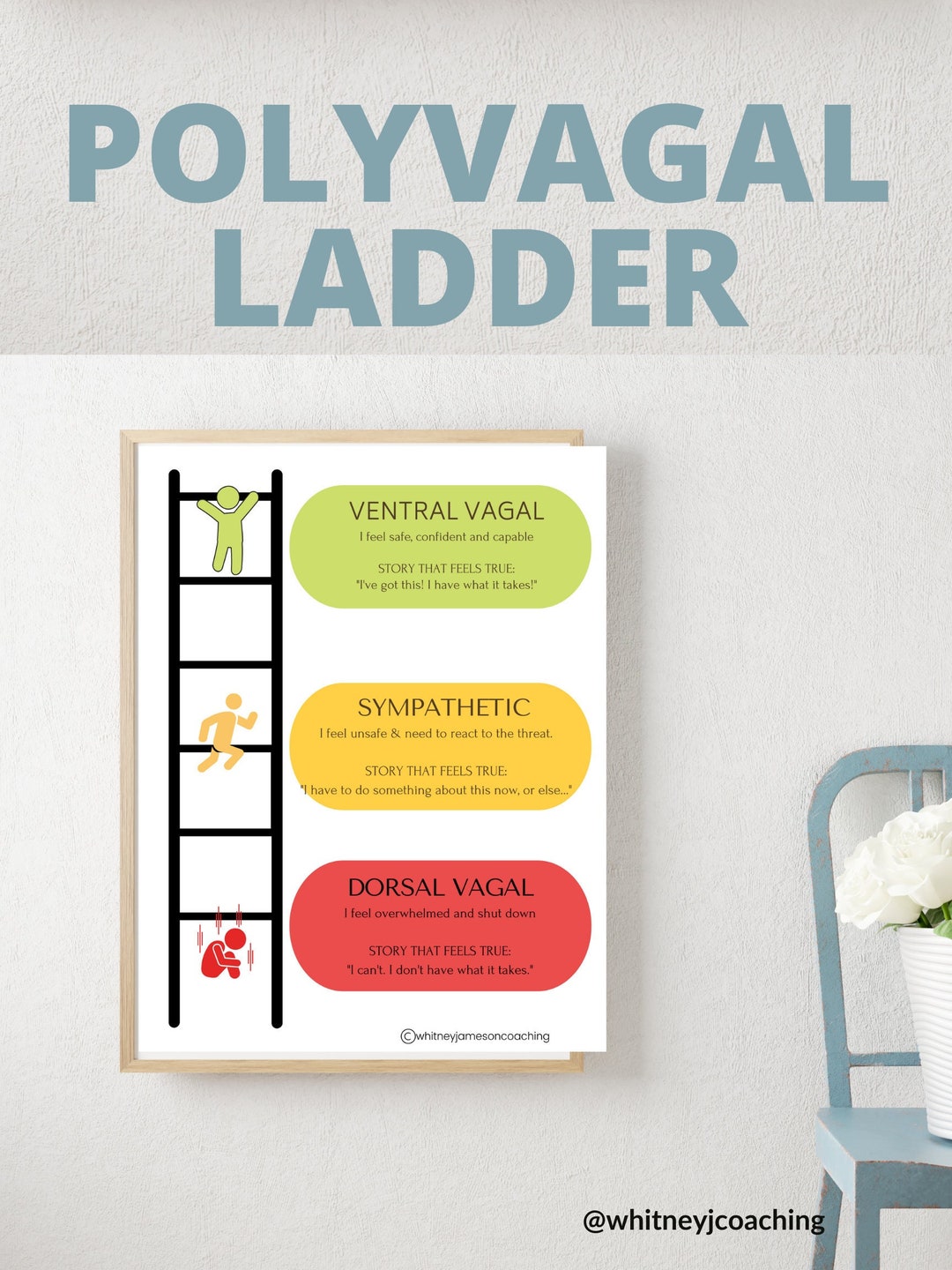
Polyvagal Ladder Polyvagal Theory Etsy Hong Kong
NIAM Free Report - pg. í Polyvagal Theory: Using the Autonomic Ladder to Work with Perfectionism with Deb Dana, L SW a Free Report from NIAM

Poly Vagal Theory and Trauma
The window of tolerance. The window of tolerance is not a term central to the polyvagal theory and was not developed by Porges, yet it broadens our perspective on the activation and regulation of the nervous system (Siegel, 1999).. According to Siegel (1999), it is a physiological and emotional regulation state where individuals can effectively cope with stressors and engage in social.

Polyvagal Theory Map
The Polyvagal Ladder is a great visual to help you understand and remember Polyvagal concepts. It's a great visual "map" to help remind you of the different parts of your autonomic nervous system. It's a fantastic tool for self-regulation. Deb Dana, therapist and Polyvagal master, created this tool

Polyvagal Theory Rising Tides Healing Centre
Polyvagal Ladder Worksheet PDF. This means that we lead with "Relationship First.". Based on the work of Deb Dana and Stephen Porges, I've created a FREE practical tool, a polyvagal ladder worksheet set. In this free Polyvagal Ladder Worksheet download, you'll find four worksheets to use with your child.
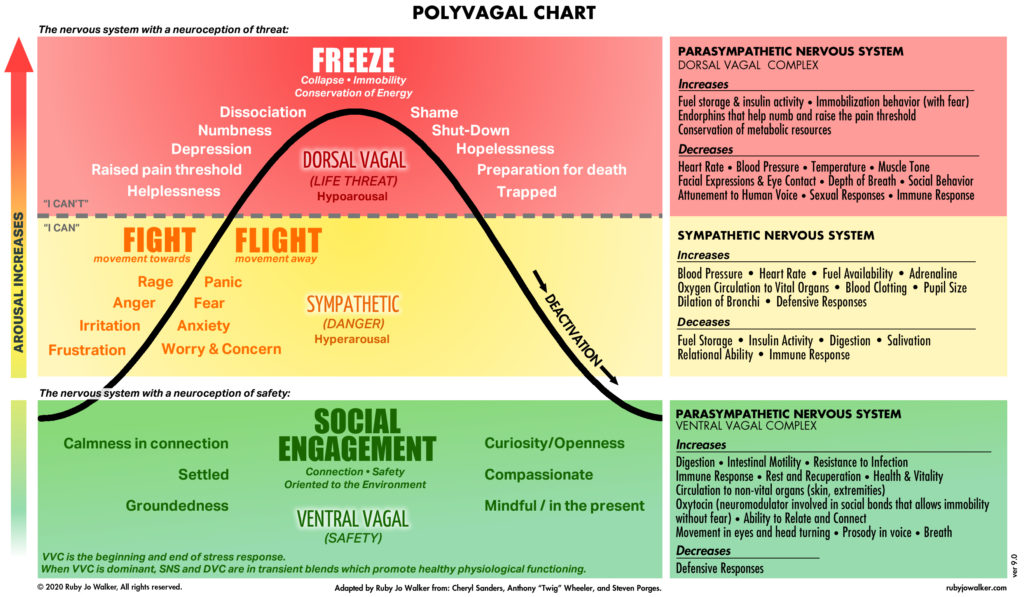
18+ Polyvagal Ladder Pdf CoreyChianna
THE VAGAL PARADOX. In 1992, I proposed that an estimate of vagal tone, derived from measuring respiratory sinus arrhythmia, could be used in clinical medicine as an index of stress vulnerability. 4 Rather than using the descriptive measures of heart rate variability (ie, beat-to-beat variability) frequently used in obstetrics and pediatrics, the paper emphasized that respiratory sinus.

Polyvagal Theory EFT & Counseling for Personal Peace Blog
What polyvagal theory (the science of connection) provides us with is a physiological and psychological understanding of how we move through a cycle of connection + engagement (ventral), mobilizati.
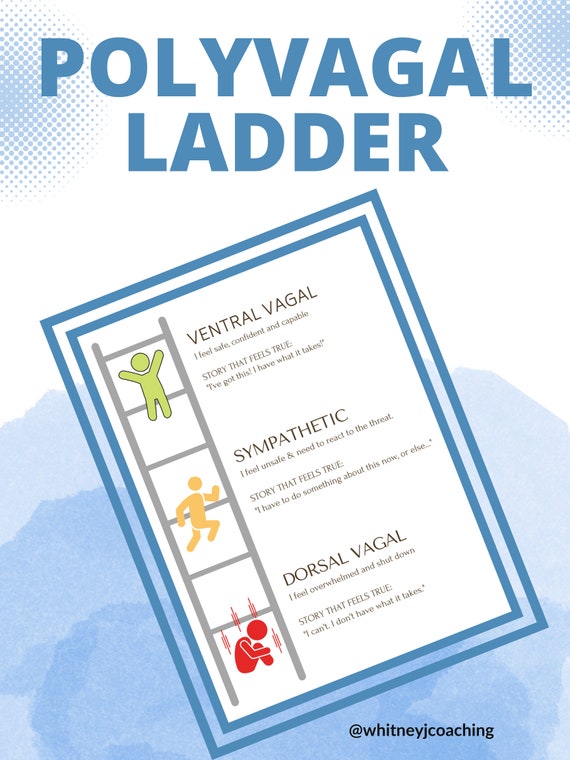
Polyvagal Ladder Polyvagal Theory Etsy
Understanding the Polyvagal Ladder: A Brief Overview. In this week's episode of Trauma Chat, Laura Reagan, LCSW-C discussed a theory that was created by Dr. Stephen Porges called Polyvagal Theory. Passionate about this theory, Deb Dana, LCSW, has played a vital role in translating the language of this theory into terms that more people will.
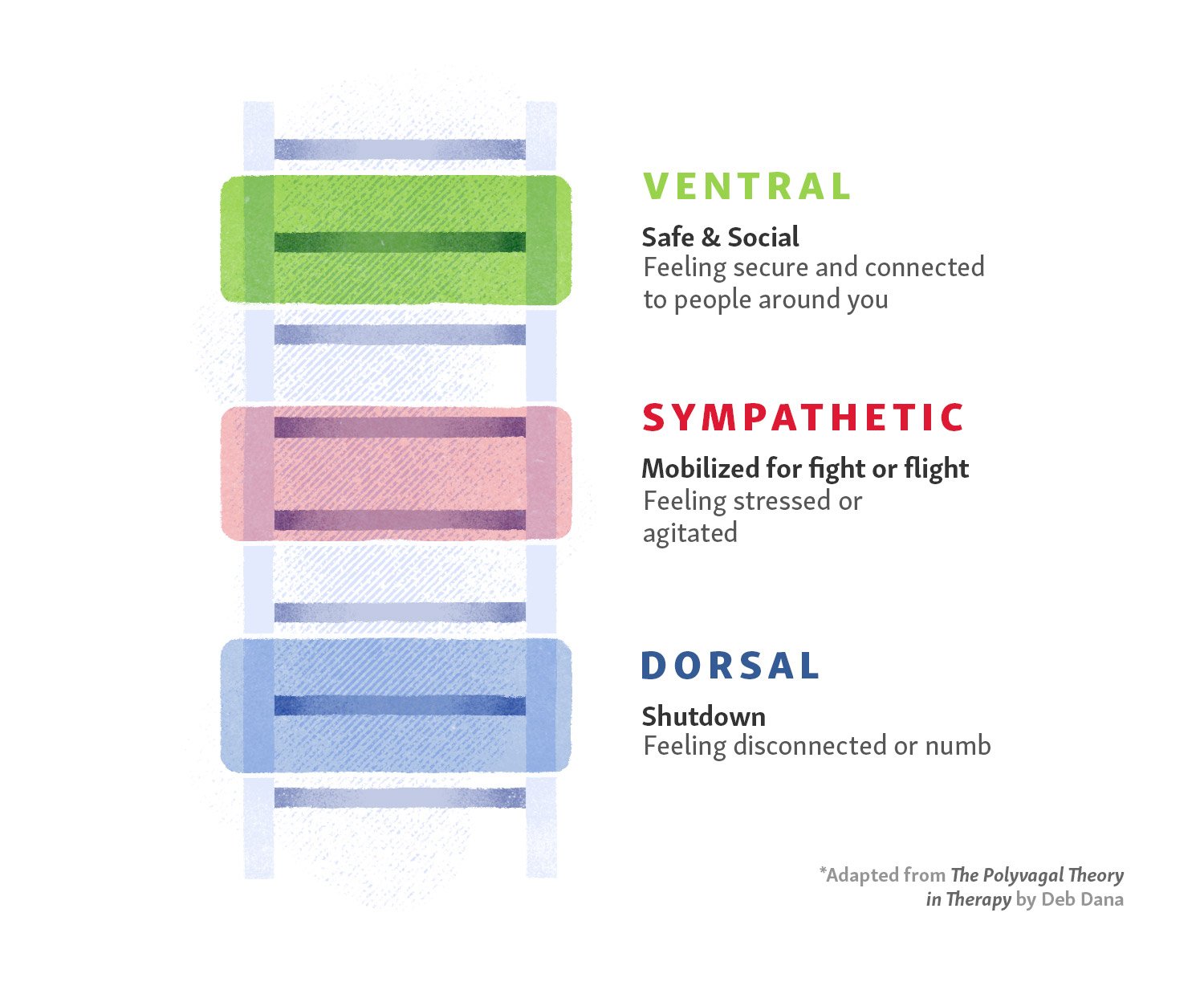
Polyvagal Theory Mapping Your Nervous System — Redeemer Counseling
The Polyvagal Theory Ladder. The polyvagal theory ladder puts the fight and flight, freeze, and social engagement responses on a ladder that we move up and down. We move up and down the rungs of the ladder depending on what's happening to us. Ideally, we live most of the time at the top rung of the social engagement system.

How to Use the Polyvagal Ladder By Trauma Geek, Janae Elisabeth
Vagus, meaning "wanderer," is aptly named. From the brain stem at the base of the skull, the vagus travels in two directions: downward through the lungs, heart, diaphragm, and stomach and upward to connect with nerves in the neck, throat, eyes, and ears. The vagus is divided into two parts: the ventral vagal pathway and the dorsal vagal.

How to Use the Polyvagal Ladder [graphics] — Trauma Geek
In 1994, Stephen Porges introduced the polyvagal theory, based on an evolutionary, neuropsychological understanding of the vagus nerve 's role in emotion regulation, social connection, and fear.

Wat is de polyvagaaltheorie Vitakracht
Polyvagal theory ( PVT) is a collection of proposed evolutionary, neuroscientific, and psychological constructs pertaining to the role of the vagus nerve in emotion regulation, social connection and fear response. The theory was introduced in 1994 by Stephen Porges. [1] There is consensus among experts that the basic physiological assumptions.

The Polyvagal Ladder
A set of graphics by Janae Elisabeth, informed by Dr. Stephen Porges, Deb Dana, Peter Levine, Justin Sunseri, Stanley Rosenberg, Bessel van der Kolk, Pete Walker, Melody Beattie, D.W. Winnicott…

Polyvagal Ladder Poster for Kids Etsy UK
10/16/2019 1 Polyvagal Theory The Resilient Wandering Nerve Rebecca Wigg-Ninham, MSW SAC Rosen Method Wisconsin [email protected] 920-360-0452 1 Autonomic Nervous System

De Polyvagaal theorie uitgelegd + praktische voorbeelden
A neuroception of safety brings us into a ventral vagal state, at the top of the "ladder". This is a state of social engagement and connection. From this state you might say the world is a safe place and describe yourself as happy, active and interested. As Porges says, story follows state. The polyvagal ladder, adapted by Deb Dana.